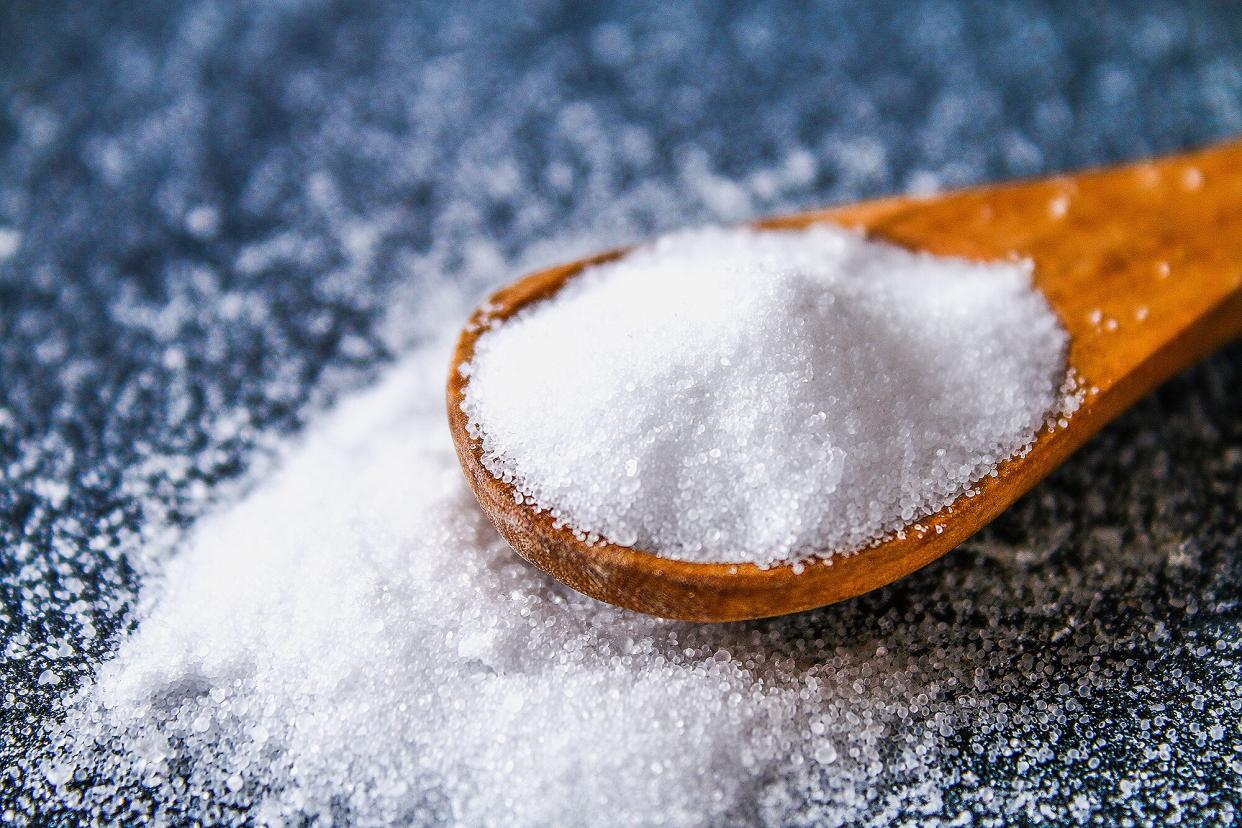The FDA Asks Restaurants and Food Manufacturers to Cut Salt Usage to Save Americans' Lives

Getty
The Food and Drug Administration (FDA) on Wednesday released new voluntary guidelines to the food industry in an attempt to reduce the amount of sodium in processed, packaged, and prepared foods.
Restaurants, food manufacturers, and food service operators (school cafeterias, food trucks, etc.) are being asked to scale back their usage of sodium, which typically shows up in the American diet as "salt" or sodium chloride.
The average sodium intake in the U.S. is currently approximately 3,400 mg a day. The FDA hopes the new guidelines will reduce that number by 12% over the course of the next 2½ years, dropping that average down to 3,000 mg of salt (about a teaspoon).
Their recommendations were set up to reduce the burden of preventable, diet-related chronic diseases like cardiovascular disease, diabetes and obesity.
Sodium intake has been linked with high rates of high blood pressure, the FDA said, which is a leading factor for strokes, heart attacks, and kidney failure. The organization said that more than 4 in 10 American adults have high blood pressure, while among Black adults, that number is 6 in 10.
"Limiting certain nutrients, such as sodium, in our diets plays a crucial role in preventing diseases like hypertension and cardiovascular disease that disproportionately impact racial and ethnic minority groups," the FDA said in a release. "These diseases often result in hundreds of thousands of lives lost and billions in annual health care costs."
"The ongoing COVID-19 pandemic has only amplified these health disparities and the need for improved nutrition, as people with cardiovascular disease and other underlying conditions are at increased risk for severe outcomes from COVID-19," they added.
RELATED: FDA Authorizes Pfizer COVID Booster Shot for Some High-Risk Populations
According to the organization, more than "70% of total sodium intake is from sodium added during food manufacturing and commercial food preparation" — making it challenging for consumers who may want to reduce their sodium intake to do so.
"Changes across the overall food supply will make it easier to access lower-sodium options and reduce intake even in the absence of behavior change," they added.
Research provided by the FDA shows that Americans consume 50% more sodium than recommended. More than 95% of children between the ages of 2 to 13 years old exceed the recommended limits of sodium in their age groups.
RELATED: Cashews Recalled Due to Potential Presence of Glass Pieces
The FDA's new recommendations are just the first in what they hope will be an ongoing journey to lower sodium intake among Americans.
Back in 2016, they released a draft guidance suggesting a limit of 2,300 mg a day — something that falls in line with the current Dietary Guidelines for Americans, which advises individuals 14 years and older to limit their consumption to that number.
The National Academies of Sciences, Engineering and Medicine also sets the Chronic Disease Risk Reduction Intake of sodium for those for those 14 years and older at 2,300 mg a day, as does the American Heart Association (though they recommend an "ideal limit" of 1,500 mg. per day, and even suggest going lower to 1,000 mg.).
RELATED: Shoppers Who Bought Chicken in the Last 10 Years Could Be Eligible for a Payout
In their release, the FDA said they plan to issue revised, subsequent targets in the future. "This iterative approach will help support gradual reductions in sodium levels broadly across the food supply so that consumers' tastes adjust, health outcomes improve and no one company or category of food is singled out or scrutinized," they said.
Lowering sodium intake over the next decade by about 40 percent could save 500,000 lives, the FDA said.

